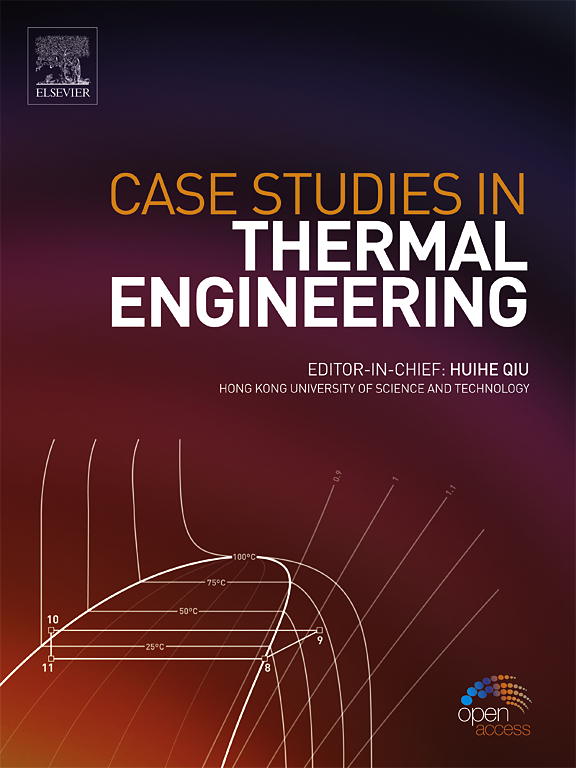基于人工神经网络的矩形翅片散热器性能及预测研究
IF 6.4
2区 工程技术
Q1 THERMODYNAMICS
引用次数: 0
摘要
板翅片散热器是热管理系统中广泛应用的散热器件,对保持电子设备的稳定运行和降低经济成本起着至关重要的作用。本文采用风洞实验装置对矩形翅片散热器的热、水力性能进行了测试。利用CFD模型研究了矩形翅片散热器在不同雷诺数、不同翅片数和不同翅片宽度下的努塞尔数和摩擦系数。结果表明:随着雷诺数的增加,摩擦系数减小,努塞尔数增大;翅片数的增加导致努塞尔数和摩擦系数的降低。此外,随着翅片宽度的增加,摩擦系数增大,但不同雷诺数下努塞尔数的变化不同。在此基础上,采用基于遗传算法(GA-BP)的多层前馈神经网络对Nusselt数和摩擦因子进行预测;随后评估这些预测结果。研究结果表明,GA-BP神经网络能够准确、快速地预测不同雷诺数、不同翅片数、不同翅片宽度条件下散热器的热水力性能。本文章由计算机程序翻译,如有差异,请以英文原文为准。
Study of rectangular fin heat sink performance and prediction based on artificial neural network
The plate-fin heat sink is a widely used heat dissipation device in thermal management systems, playing a crucial role in maintaining the stable operation of electronic equipment and reducing economic costs. In this study, the wind tunnel experimental device was employed to test the thermal and hydraulic properties of a rectangular fin heat sink. The CFD model was utilized to investigate the Nusselt number and friction factor of the rectangular fin heat sink under varying Reynolds numbers, fin numbers, and fin widths. The results indicate that as Reynolds number increases, the friction factor decreases while the Nusselt number increases. An increase in fin number leads to a decrease in both Nusselt number and friction factor. Moreover, with an increase in fin width, the friction factor increases while changes occur differently for Nusselt number at different Reynolds numbers. Furthermore, a multi-layer feedforward neural network based on a genetic algorithm (GA-BP) is employed to predict both Nusselt number and friction factor; subsequently evaluating these predicted results. The findings demonstrate that GA-BP neural network can accurately and rapidly predict thermal and hydraulic properties of heat sinks under various conditions including different Reynolds numbers, fin numbers, and fin widths.
求助全文
通过发布文献求助,成功后即可免费获取论文全文。
去求助
来源期刊

Case Studies in Thermal Engineering
Chemical Engineering-Fluid Flow and Transfer Processes
CiteScore
8.60
自引率
11.80%
发文量
812
审稿时长
76 days
期刊介绍:
Case Studies in Thermal Engineering provides a forum for the rapid publication of short, structured Case Studies in Thermal Engineering and related Short Communications. It provides an essential compendium of case studies for researchers and practitioners in the field of thermal engineering and others who are interested in aspects of thermal engineering cases that could affect other engineering processes. The journal not only publishes new and novel case studies, but also provides a forum for the publication of high quality descriptions of classic thermal engineering problems. The scope of the journal includes case studies of thermal engineering problems in components, devices and systems using existing experimental and numerical techniques in the areas of mechanical, aerospace, chemical, medical, thermal management for electronics, heat exchangers, regeneration, solar thermal energy, thermal storage, building energy conservation, and power generation. Case studies of thermal problems in other areas will also be considered.
 求助内容:
求助内容: 应助结果提醒方式:
应助结果提醒方式:


